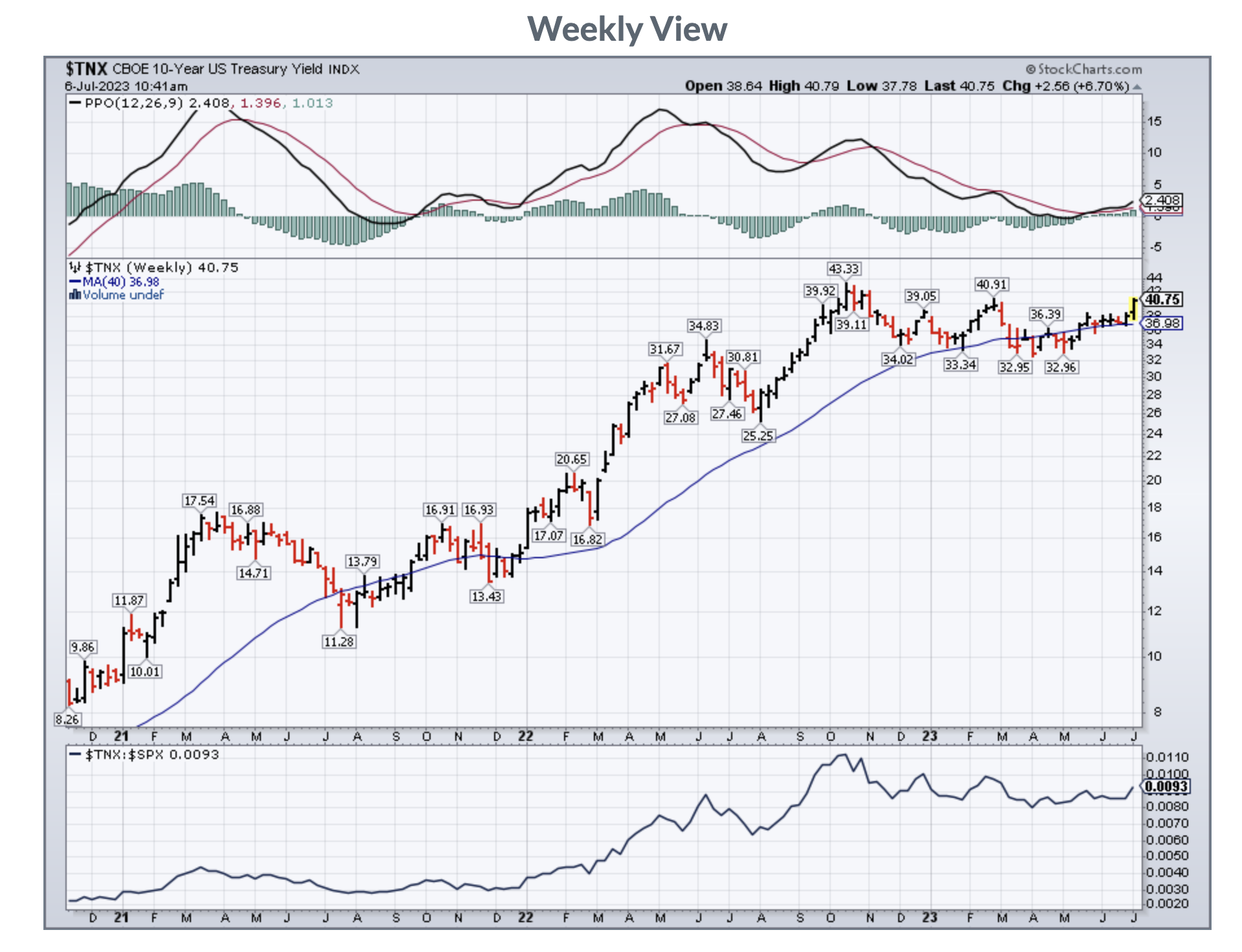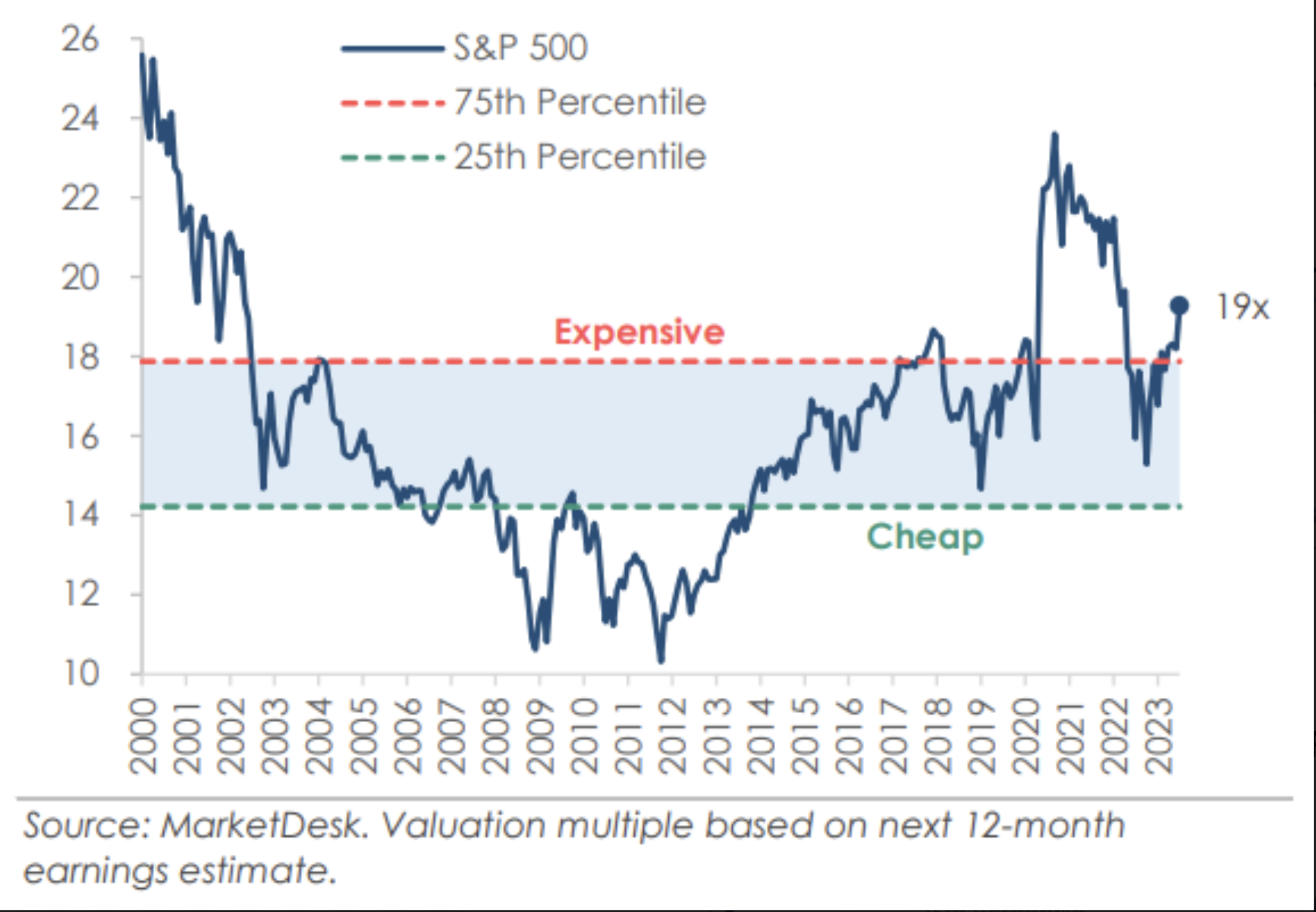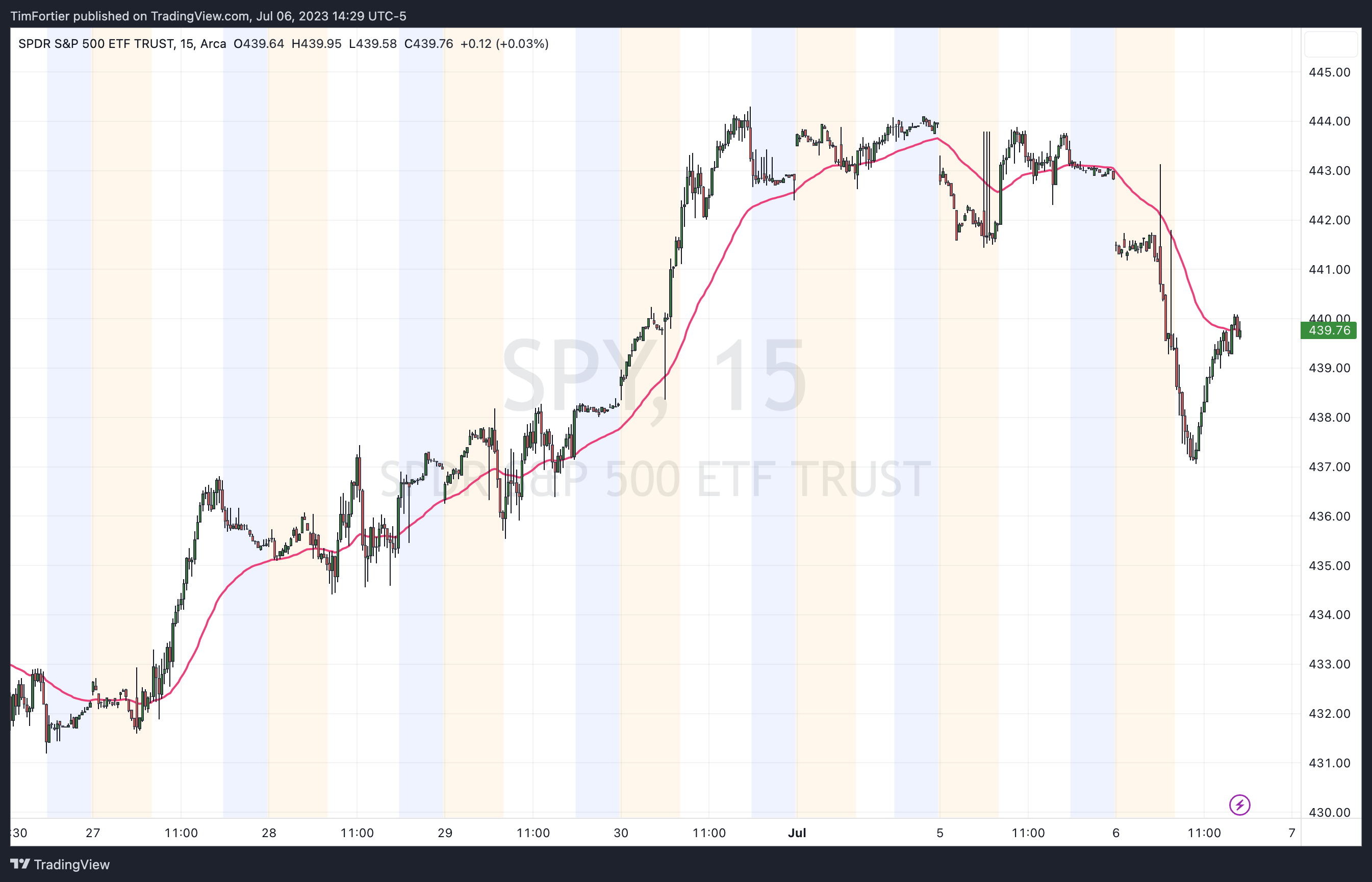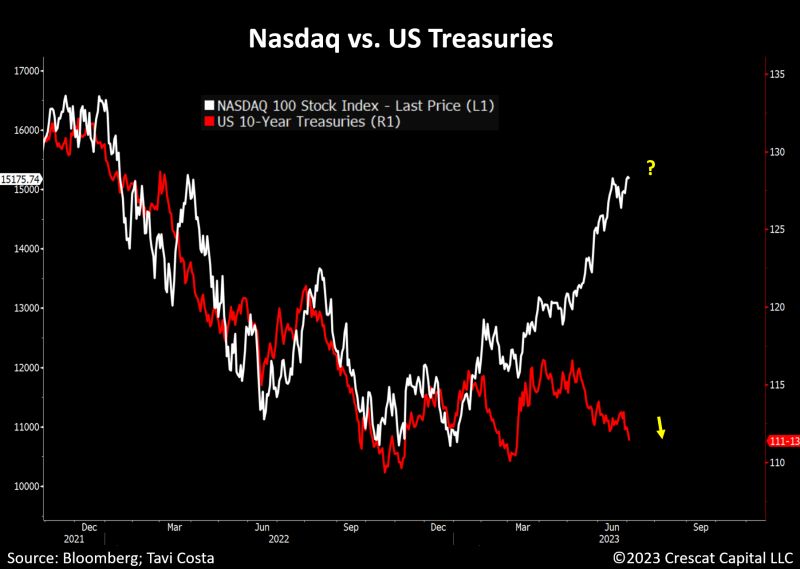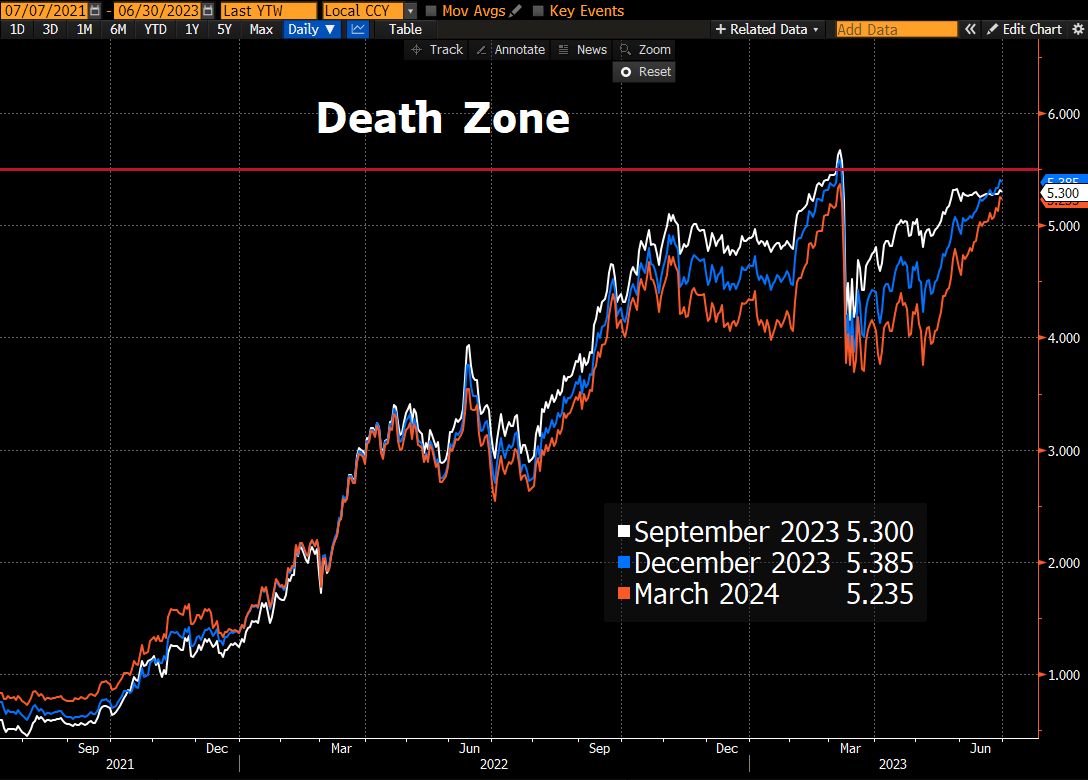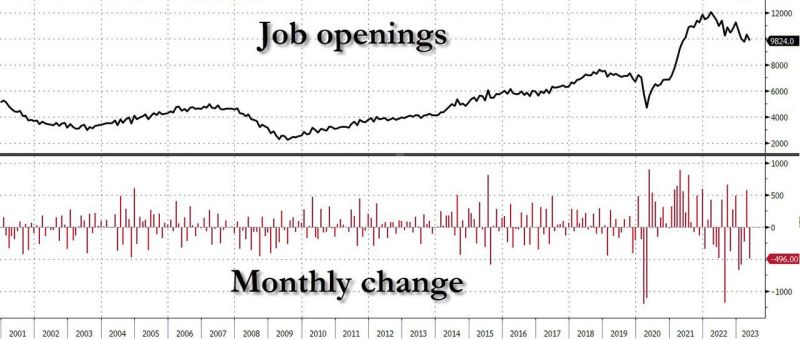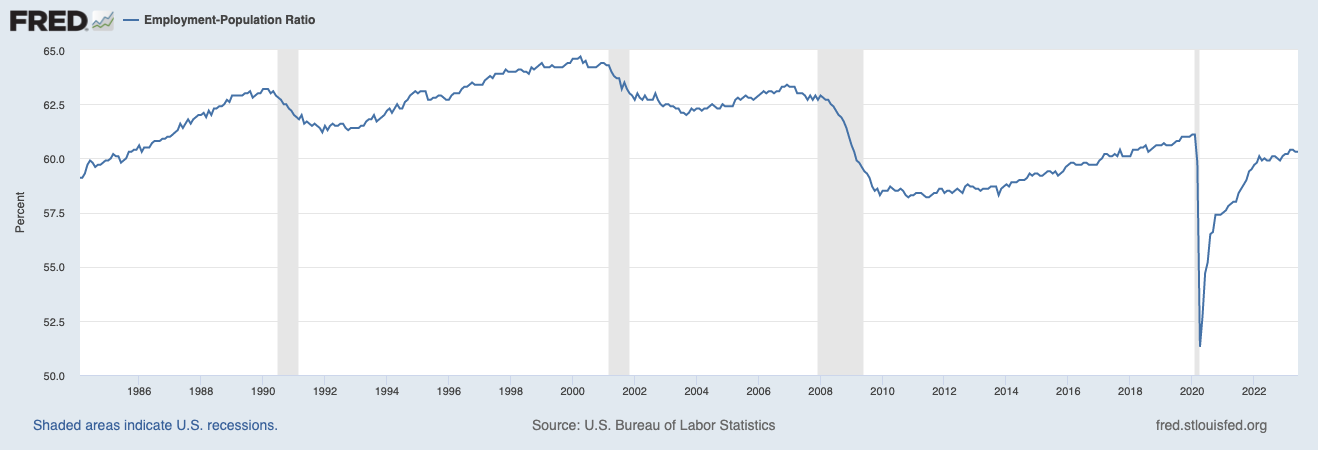Related Blogs
July 7, 2023 | Avalon Team
We live in a world where the cost of money has an impact on practically everything.
Credit cards, mortgage rates, government borrowing costs, and the costs to expand a business… the list goes on.
And the cost of money is again rising.
The all-important U.S. 10-Year Government Bond rate is very close to making a new high.
As interest rates rise, it makes the value of future cash flows less attractive, which is why growth stocks perform better in a low-interest rate environment.
And with stocks back into the “expensive zone,” it becomes an even greater risk.
And this may be why stocks have started to back up here at the start of July.
This 15-minute chart shows how stocks have started to roll over.
Is this the beginning of a trend reversal?
It’s too early to tell.
As Mike correctly pointed out this week, the Dow Theory is, for the moment, constructive on its outlook for stocks.
But a continued rise in interest rates could quickly cause investors to reconsider.
The recent divergence between Nasdaq and Treasuries appears to be completely unsustainable.
Ultimately, the present value of long-duration businesses must reflect the ongoing rise in discount rates.
Equity markets, particularly mega-cap tech companies, have completely ignored the rising duration risk this year.
Although some investors have attributed the increase in long-term interest rates to a perceived economic improvement, the macro data certainly does not support this narrative.
The massive increase in the supply of these instruments has mostly caused the decline in Treasuries.
Last month alone, we saw $850 billion of Treasury issuances, the second-largest monthly figure in history.
This supply pressure is unlikely to stop with a fiscal deficit that remains nearing 8% of GDP, causing the debt problem to compound at an alarming pace of almost 10% annually, all while the Fed continues to shrink its Treasury holdings at its fastest pace in history.
Climbers in the Himalayas know it – the death zone that begins at 8,000 meters.
For capital markets, it starts at a fund futures level of 5.5%. If the Fed has to raise rates above this threshold, it will be a partial admission that the 500bps hikes are not enough to fight inflation.
If we look at the Fed fund futures for Sept 23, Dec 23, and Mar 24, they have been more or less flat or up only slightly since the autumn of 2022. This is one of the main drivers in the huge rally in risky assets.
The market suggests that the Fed is close to the peak of its hiking cycle, but the margin of error remains extremely small.
Investors need to pay close attention to rates and be prepared for increased volatility should rates break above this zone.
Good News, Bad News
Today it was reported that Job growth dipped in June, suggesting the hot labor market is starting to cool – though maybe not enough to change rate hike expectations.
Stocks pulled back following the jobs report, but so did Treasury yields.
But while a slip in job growth may be considered a win for the Fed, in the real world, it means fewer people are working, which is generally not good for the economy.
“The full effects of our rapid tightening have yet to be felt.” Jay Powell 12/14/2022.
The monthly change in job openings has become more negative in recent months.
A more meaningful way to study this data is to compare the number of workers per population. The more people that are working, the better the economy.
Historically, this number begins to decline in advance of every recession as this chart shows.
Today that number is flatlining but so far is not providing any clear warning.
But we’ll be bear-watching in the coming months.
For now, interest rates are the most important thing for investors to be focused on, as any further move higher is likely to prove unsettling to equity investors.
If you have any questions or have been considering hiring an advisor, then schedule a free consultation with one of our advisors today. There’s no risk or obligation—let's just talk.
Tags

Free Guide: How to Find the Best Advisor for You
Get our absolutely free guide that covers different types of advisory services you'll encounter, differences between RIAs and broker-dealers, questions you’ll want to ask when interviewing advisors, and data any good financial advisor should know about you and your portfolio.


